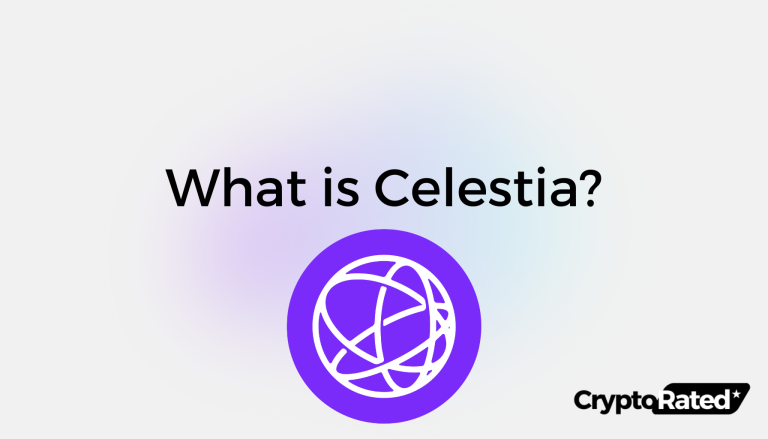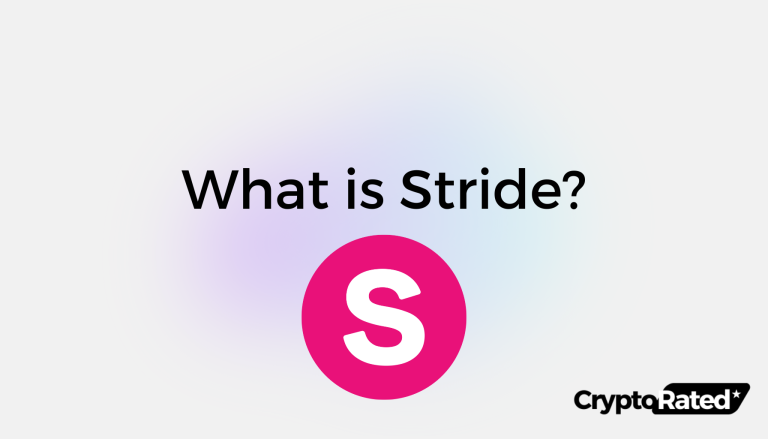
What Is Chainlink? (LINK)
Chainlink (LINK) is a decentralized oracle network that connects blockchain-based smart contracts with external data. Chainlink’s middleware enables non-blockchain enterprises to securely connect with blockchain platforms. Chainlink was created by Sergey Nazarov and Steve Ellis1, who authored a 2017 white paper with Ari Juels, and the network launched in 2019. The Chainlink blockchain is hosted on the Ethereum platform and uses the proof-of-stake (PoS) operating protocol.
Key Takeaways
- Chainlink is a decentralized Oracle network that connects blockchains with off-chain data.
- Chainlink uses hybrid smart contracts to integrate on-chain code and off-chain data infrastructure.
- Chainlink tokens—called LINK—serve as currency to pay Chainlink network operators for retrieving and preparing off-chain data and performing computations.
- Chainlink’s market capitalization has surged by over 300% in 2023, and it’s closing in on the top 10 cryptocurrencies.
How Does Chainlink Work, and What is the Chainlink Oracle?
Chainlink is a decentralized oracle network that connects blockchains with off-chain data. It uses “hybrid smart contracts” to integrate on-chain code and off-chain data. Chainlink’s decentralized oracle network is a system of nodes that adhere to set protocols.
Chainlink’s decentralized oracle network allows blockchains to exchange data with off-chain systems in a decentralized and tamper-resistant way. This feature makes the Chainlink Oracle network useful for many applications.
For instance, Chainlink has been used to distribute non-fungible tokens (NFTs) fairly, gamify personal savings, and facilitate recalibrations of cryptocurrency token supplies.
Chainlink is known for its ability to support the secure sharing of inputs, outputs, and computations. Some of Chainlink’s features include:
- Supporting decentralized data feeds: Chainlink collects and processes data from many sources in a secure manner for hybrid smart contracts.
- Providing verifiable sources of randomness: Applications such as games that require cryptographically secured randomness can use Chainlink.
- Enabling automation: Chainlink smart contracts can automate critical functions and event-driven tasks for enterprises.
- Supporting cross-blockchain interoperability: Chainlink can connect blockchain platforms to support the exchange of messages, tokens, and specific actions.
What is the utility of Chainlink?
Chainlink is a decentralized blockchain oracle network that connects smart contracts with real-world data. The utility of Chainlink is to provide reliable and secure access to off-chain data, events, and payments to the blockchain ecosystem2.
Chainlink’s decentralized Oracle network enables smart contracts to be connected to any external API, data source, or payment system without the need for a centralized intermediary.
Chainlink’s unique approach to decentralized oracles ensures that the data provided to smart contracts is accurate, tamper-proof, and resistant to manipulation. This is achieved through the use of multiple independent oracles, which source data from different providers and aggregate it to produce a single, consensus-based result.
The utility of Chainlink is not limited to just data sourcing and aggregation. Chainlink also provides a secure and decentralized way to execute off-chain payments and settle transactions on the blockchain. This is achieved through the use of Chainlink’s decentralized payment network, which enables smart contracts to send and receive payments in any currency without the need for a centralized payment processor.
Chainlink’s utility extends beyond the blockchain ecosystem, as it can be used to connect any digital system with external data sources and payment systems. This makes Chainlink a powerful tool for enterprises looking to integrate blockchain technology into their existing systems and processes.
In summary, the utility of Chainlink lies in its ability to securely and reliably connect smart contracts with real-world data, events, and payments. This enables the creation of smart contracts that can execute complex logic and trigger actions based on real-world events without the need for a centralized intermediary.
Chainlink’s decentralized Oracle network and payment system make it a powerful tool for enterprises looking to integrate blockchain technology into their existing systems and processes.
How Chainlink Differs From Ethereum?
Chainlink is a layer-2 blockchain deployed on Ethereum. Both serve as smart contract platforms with multiple-use cases and rely on a native token for transaction payments. They operate using proof-of-stake systems and validates are rewarded in their respective tokens for maintaining the network. Despite these similarities, these projects differ greatly.
For instance, Chainlink is a decentralized oracle network that enables secure communication between off-chain data and blockchain projects; while some off-chain communication is possible with Ethereum, it is not designed to facilitate this process.
The use cases of the Chainlink Oracle include the following:
- DeFi
- GameFi
- Climate Markets
- Enterprise
- Insurance
Essentially, Chainlink is an attempt to connect the real world to the blockchain and, in the process, create a vast new set of use cases for decentralized technology. Chainlink borrows plenty of ideas and code from Ethereum as it’s a layer-2, but it’s an independent project with numerous unique features.
| Feature | Chainlink (LINK) | Ethereum (ETH) |
|---|---|---|
| Primary Function | Provides secure and reliable data feeds to smart contracts on blockchains | Enables the creation and execution of decentralized applications (dApps) |
| Type of Blockchain | Decentralized oracle network built on Ethereum | Layer-1 blockchain |
| Token | LINK token | ETH token |
| Use Cases | Supplying real-world data to smart contracts, facilitating secure and efficient communication between blockchains and off-chain systems | Smart contract development, decentralized finance (DeFi), non-fungible tokens (NFTs) |
| Network Security | Proof-of-Stake (PoS) with decentralized oracles | Proof-of-Work (PoW) |
| Scalability | Scalability is an ongoing challenge for Ethereum, with solutions like sharding and Layer-2 scaling solutions being explored. | LINK token is used to compensate Oracle nodes for providing data feeds, ensuring data accuracy and security |
| Transaction Fees | Growing developer community with a focus on decentralized Oracle solutions | ETH is used to pay for gas, which is the computational fee required to execute transactions on the Ethereum network |
| Supply | Maximum supply: 1,000,000,000 | Maximum Supply: Unlimited technically but stable at 120,222,913 with burn mechanism. |
| Market Cap | $8.5 billion | $278 billion |
| Rank by Cap | #15 | #2 |
What Is the Chainlink (LINK) coin’s use case?
Chainlink tokens, or LINK, serve as the currency that pays Chainlink network operators for retrieving and preparing off-chain data and performing computations. Enterprises using Chainlink can access any major blockchain network, including Ethereum and Solana.
Node operators are required to stake their LINK tokens, and they set their own fees based on demand for the off-chain resource they provide. Node operators with the largest stakes are best positioned to earn LINK rewards.
Chainlink (LINK) coins are used to reward Chainlink network operators for retrieving data from off-chain feeds, formatting data into accessible formats, and performing off-chain computations. As an ERC-20 token, LINK is compatible with other currencies and smart contracts supported by the Ethereum platform.
Chainlink (LINK) has a maximum supply of 1 billion; about 556 million Chainlink tokens have been issued as of December 2023.
What is the vision of Chainlink?
Chainlink’s vision is to enable the creation of hybrid smart contracts that can access off-chain data, enable the creation of new use cases, and expand the support for blockchain environments.
As most data and records are not yet maintained within blockchains, Chainlink aims to connect blockchain networks with off-chain information. In 2021, the Chainlink network grew to include over 1,000 projects and secured more than $75 billion of value.
What Can I Buy With LINK?
Chainlink (LINK) is not designed for everyday purchases. Instead, it is primarily used to incentivize Chainlink node operators who transfer data to and from blockchains.
Why has chainlink surged in 2023?
Chainlink has gained popularity due to its ability to connect various blockchains with different types of data via its decentralized oracle. This feature enables Chainlink to integrate with many industries and business functions, making it a versatile and valuable tool for developers and businesses alike.
Data from TradingView shows that Chainlink has performed exceptionally well in 2023. In early January, it was trading at just $5, and as of writing in December, it’s above $15. Chainlink has benefited from the crypto bull run, a series of partnerships between Chainlink and several high-profile companies, and an upgrade to its staking system3.

Final Thoughts on Chainlink
In an industry that is often littered with low-effort projects, Chainlink stands out as one of the most innovative and unique attempts to connect blockchains with real-world companies and institutions. Its Oracle network has been leveraged to improve supply chains, protect sensitive data, and even provide solutions for climate change mitigation. In 2023, Chainlink has been one of the best-performing cryptocurrencies, and its market capitalization puts it among the top 15 cryptos, according to CoinGecko.
Frequently Asked Questions
How does Chainlink integrate with blockchain technology?
Chainlink is middleware that connects smart contracts on blockchain platforms to external data sources, payment systems, and other off-chain resources. It does so by providing a decentralized oracle network that facilitates secure and reliable data transfer between the blockchain and the outside world.
Can you explain the process of staking within the Chainlink ecosystem?
Staking is the process of holding and locking up a certain amount of cryptocurrency in order to participate in the validation of transactions on a blockchain network. In the Chainlink ecosystem, staking is used to incentivize node operators to provide accurate data to the Oracle network. Node operators who stake LINK tokens can earn rewards for their contributions to the network.
A large amount of Chainlink (LINK) is required to become a validator, and competition is extremely high, meaning most retail investors cannot stake their coins.
In what ways does Chainlink form partnerships, and with whom?
Chainlink forms partnerships with various entities in the blockchain and traditional finance industries to expand the reach and use cases of its Oracle network. Some of its notable partnerships include collaborations with Google Cloud, SWIFT, and Hedera T-Mobile.
What are the revenue generation models for Chainlink?
Chainlink generates revenue by charging fees to users who request data from the Oracle network. Node operators who provide accurate data to the network can also earn rewards for verifying transactions and retrieving data.
How does Chainlink differ from Ethereum in its core functionality?
Chainlink and Ethereum serve different purposes in the blockchain ecosystem. Ethereum is a decentralized platform that enables the creation of smart contracts and decentralized applications (dApps), while Chainlink is a middleware that connects smart contracts to external data sources.
WRITTEN
Peter Barker
Peter is an experienced crypto content writer and a DeFi enthusiast with more than 3+ years of experience in the space. Previously a journalist and news editor at a leading European news sourcing agency.




